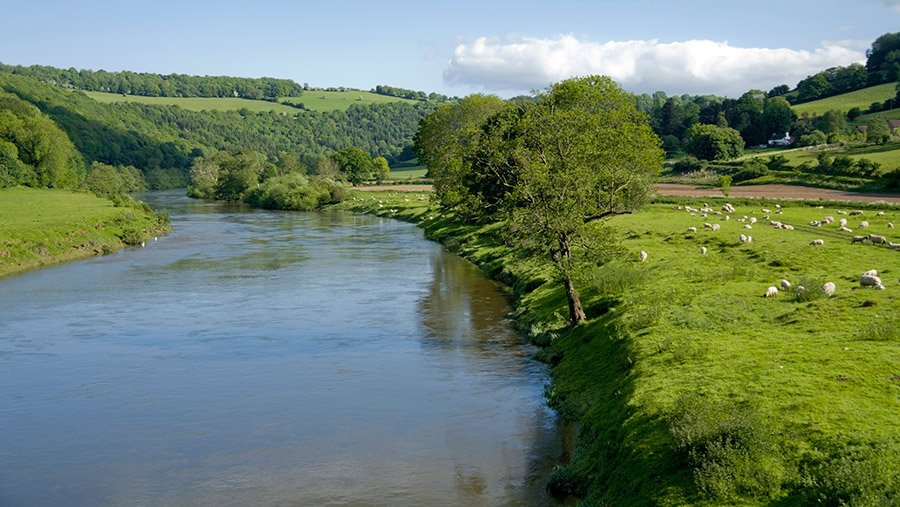- Carved of wood and painted with tar, Saint Bilibeu is said to bestow fertility on the land, animals and women, and is worshipped every year in the territory belonging to the Akroá Gamella people in Brazil’s Maranhão state.
- The ritual, which includes Catholic elements, lasts for four days and sees a procession of people dressed as hunting dogs gather food and drink to offer to Saint Bilibeu.
- Once celebrated during Carnaval, today the ritual is held on April 30 in recognition of an attack by ranchers on the Akroá Gamella community during a land dispute in 2017.
He’s called Bilibeu, Saint Bilibeu, or even Bilibreu. Carved of wood and painted with tar, this saint is said to bring fertility to the earth, to animals, and to women. He’s worshipped every year by the Akroá Gamella Indigenous people who live on the land between the municipalities of Viana, Matinha and Penalva in the Brazilian state of Maranhão.
“Bilibeu lives in the forests, the creeks, the sky and among us,” says Maria Roxa Akroá Gamella, a local shaman.
The ritual, composed of elements from Catholicism, lasts for four days and features a race that, this year, went on for 12 hours. The idea is to travel through all the villages in the territory and do justice to the Akroá Gamella by saying “our feet are our scriptures.” It’s meant to affirm that the invasion of traditional lands that occurred from the 1960s to the 1980s doesn’t invalidate the ownership by Indigenous people from time immemorial. “People did this in the old times. They walked to visit all four corners of the territory every year,” says Borges Akroá Gamella.
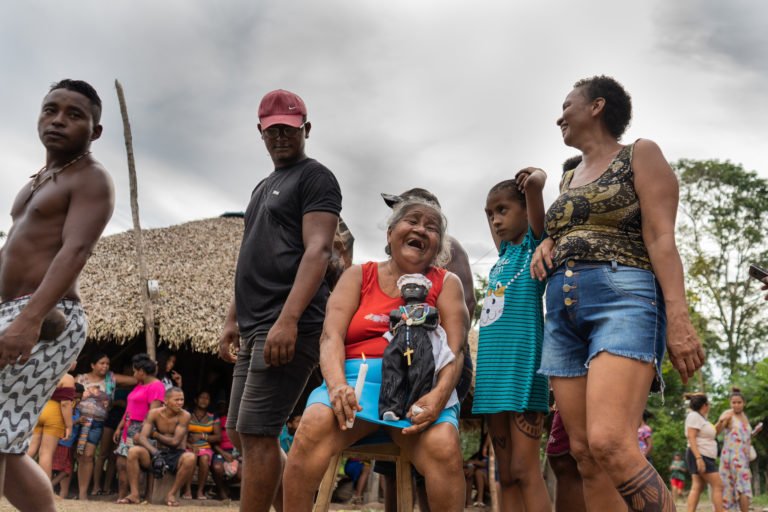
Considered extinct by the Brazilian government, the Akroá Gamella were referred to as mulattos, or a mixed-race people, for decades. Because their identity — and consequently their culture — had been censored, the Akroá Gamella kept their worship of the spiritual entities they believe inhabit their territory a secret. But Bilibeu didn’t need to be hidden: he remained public because he became part of Carnaval celebrations. “He survived because this is a time when everything is allowed,” says Domingos Akroá Gamella, one of the people responsible for praying the saint’s novena.
So Bilibeu has always been allowed to exist on the streets during the festival, when dozens of children and adults, their bodies painted with charcoal, embody “Bilibeu’s Hounds” and go “hunting” from house to house, village to village. The hounds, led by the figures of a margay and a jaguar, both wild cats, collect food and drink from each home to offer up to the saint. At a certain point in the ritual, Bilibeu dies, is buried as the women cry, and is reborn the following morning to continue bringing abundance and fertility to the Akroá Gamella people. “I’ve been going out as a Bilibreu hound since I was 12,” says Pyn Capric Akroá Gamella, now 24.
One of Bilibeu’s most important roles is as a purveyor of fertility. Under his clothes, he carries a phallus, and when women become pregnant, Bilibeu is considered the father. In the rituals following birth, mother and child offer their thanks by means of paying their promises. The mother offers breast milk to Bilibeu as she had promised. When they are big enough, the children become hounds in his pack. The need to keep living (and being born) has kept the ritual alive year after year since time immemorial.
The ritual was accepted during Carnaval, but was always regarded as strange by those from the outside. It survived on the line between play and the bizarre, because on the day of the hunt, the hounds sublimate their humanity and eat raw meat in front of everyone. The chickens offered to the saint are torn apart in a violent fight between people personified as hounds. The winning dog runs away carrying the head of the bird it has won in its mouth. Through his hounds, Bilibeu drinks cachaça, a sugarcane liquor, and eats pigs and fowl or anything else the owner of a home visited by the pack may offer. During the race, the offerings are thrown into the air or buried so that the dogs may dig them up with their paws.
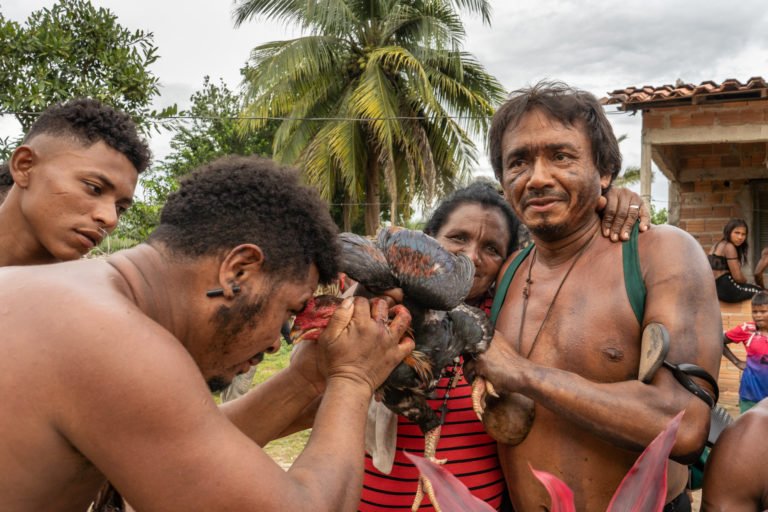
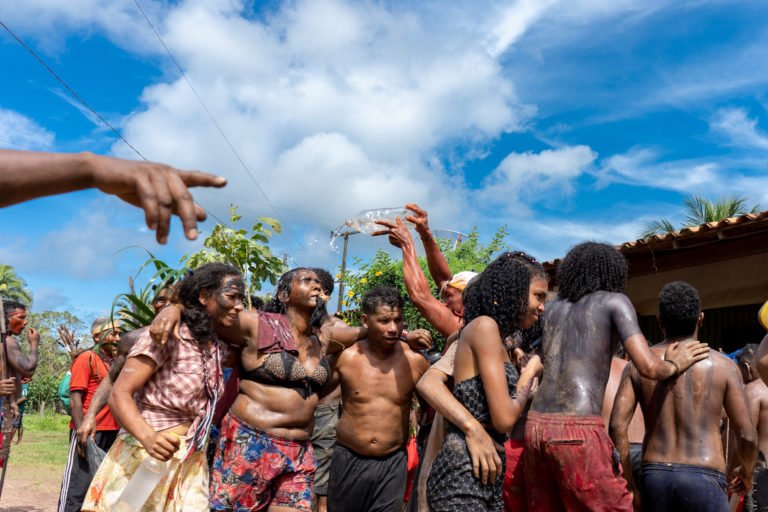
‘Are they really Indians?’
In recent years, the Akroá Gamella people have chosen a different date for the Bilibeu ritual that doesn’t fall during Carnaval week. Since 2018, they’ve held it on April 30 — a day marked by much pain, sadness, and anger. It was on this day in 2017 that two Akroá Gamella men were maimed and another two dozen wounded in a clash with some 300 ranchers and alleged landowners in the region. “They wanted it to be a day of grief, but we transformed it into a day to fight,” says community leader Kum’tum Akroá Gamella.
The attack took place in the late afternoon of April 30, 2017. “It’s 5 p.m. right now. It was more or less at this time that we were attacked exactly five years ago,” Kum’tum says in a speech during one of the parades that the hounds held during the hunt. “Today’s race is fundamental for teaching our youth our ways. We only fight for the things that we know,” he declares to the young people around him.
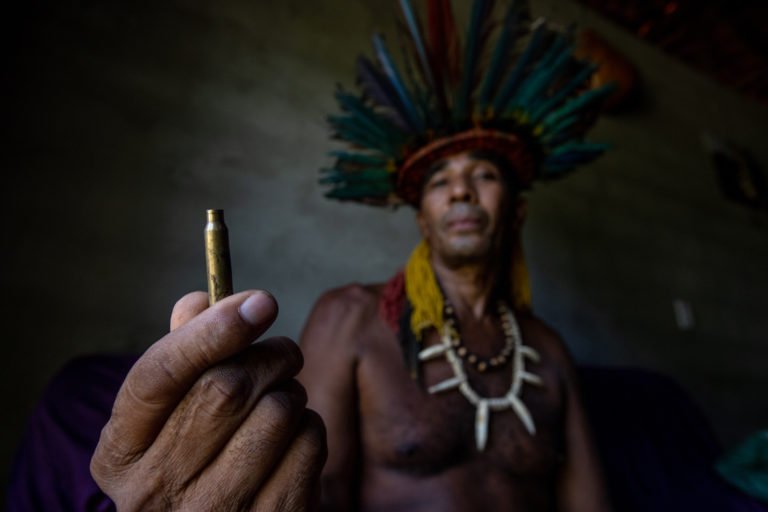
At the time of the 2017 attack, it had been three years since the Akroá Gamella had publicly declared themselves to be an Indigenous people. By that time, they had taken possession of about a dozen plots of land, sparking an outcry from the ostensible landowners, anti-Indigenous political groups, and local religious leaders. The “opposition,” as they refer to their political adversaries, began organizing themselves to respond to the Akroá Gamella’s repossession of land.
According to the Akroá Gamella, the attack was planned during a series of meetings at Protestant evangelical churches, where religious leaders, including one identified only as O.S., would ask for money or weapons to respond to the repossession. “O.S. would go to the churches asking for money or weapons. If [a person] didn’t have 300 reais [$55], they could donate a gun,” says an Akroá Gamella individual who used to frequent one of the evangelical churches and asked not to be identified or to give the full names of those involved for fear of retaliation.
Two days before the attack, Brazilian congressman Aluisio Mendes, today a member of the evangelical Christian Social Party (PSC), and the same local religious leaders went on a local radio station to call people to a protest called the March for Peace. At a rally the following day, Mendes railed against the Indigenous people. In one of the few videos available on the internet, he can be seen saying that “no one here has cockroach blood, no one will accept this provocation.” For many, it was a foreshadowing of what would happen hours later.
“It was a really hard time, I really don’t like to think about it,” says Zé Canário Akroá Gamella, who lost the movement in his right hand after it was nearly severed with a machete during the attack.
“I was shot in the back, and cut on my arm and on my leg,” says Aldeli Akroá Gamella, whose limbs were also hacked. “They had to operate on my mouth and on my head. They didn’t beat me.”
The episode was so brutal that it drew global media attention. The Akroá Gamella’s self-declared ethnic identity was questioned mostly by local media, society and government officials. “Are they really Indians?” was the question that reverberated behind news shows on April 30. Government officials reinforced the uncertainty by using terms like “supposed Indigenous people” and “pseudo-Indigenous people” to refer to them, and “supposedly Indigenous land” to refer to the land they were claiming as their own.
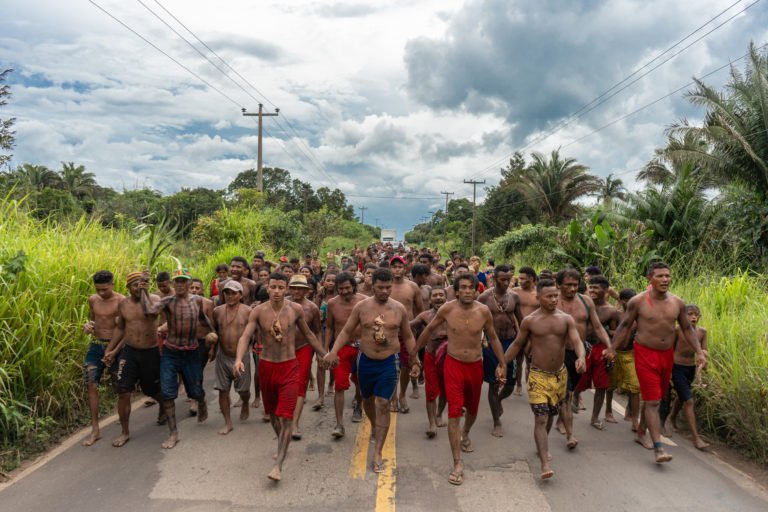
Supernatural beings
Many of the Akroá Gamella were Protestant evangelicals. But when they declared themselves Indigenous, they had to choose between the evangelical community and their identity as a people. Some went one way and some went the other. “So then, I declared that I am an Indian, one of the Akroá Gamella people,” says an ex-evangelical member of the community, who asked not to be identified. “When I showed up with paint on, they thought it was strange, and said that this wasn’t something a believer would do, that it was of the devil.”
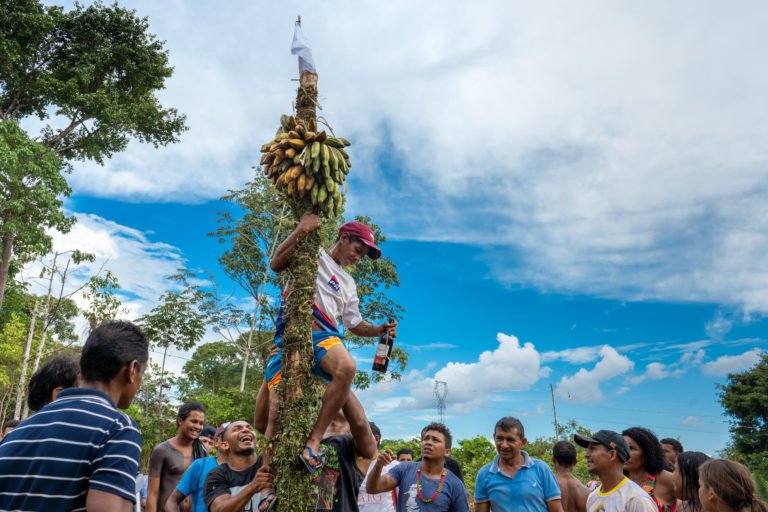
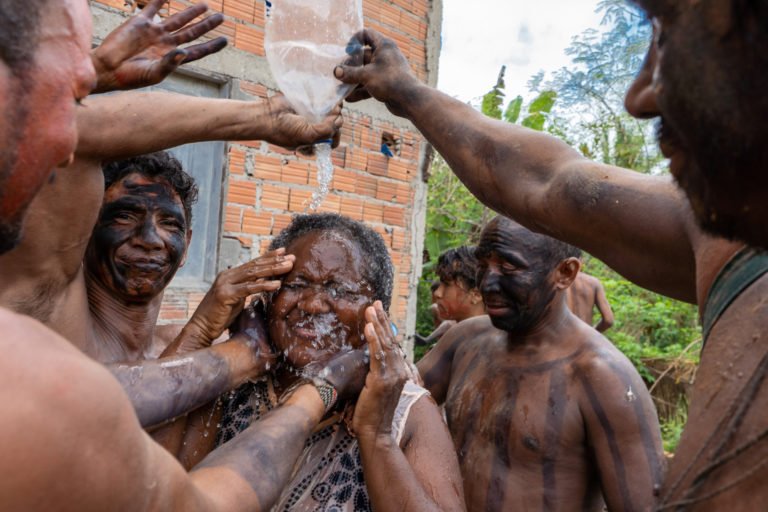
Bilibeu is not the Akroá Gamella people’s only supernatural being; their territory is home to many spiritual entities. In fact, their repossession of traditional lands in 2017 was aimed at recovering the Fragato, a sacred site where they believe a mermaid, or “Water Mother,” lives, who was at risk of dying because the land around it was being dried up by a farm.
But Bilibeu is the most iconic of the spirits. The rich details of his ritual have been maintained over the decades, even during the time his people were considered extinct. “Bilibeu is neither here nor there,” says Pjhcre Akroá Gamella. “Ask him softly in his ear where he lives and he will tell you,” she teases, sidestepping questions about the ritual that, after her people’s self-declaration, is gaining new meaning amid the sacred traditions of the Akroá Gamella.
Banner image of a Bilibeu “hound” wearing a mask made of pindoba palm leaves, by Ana Mendes.
This story was reported by Mongabay’s Brazil team and first published here on our Brazil site on July 4, 2022.
See related coverage:
With plantation takeover, Brazil’s Indigenous Pataxó move to reclaim their land








